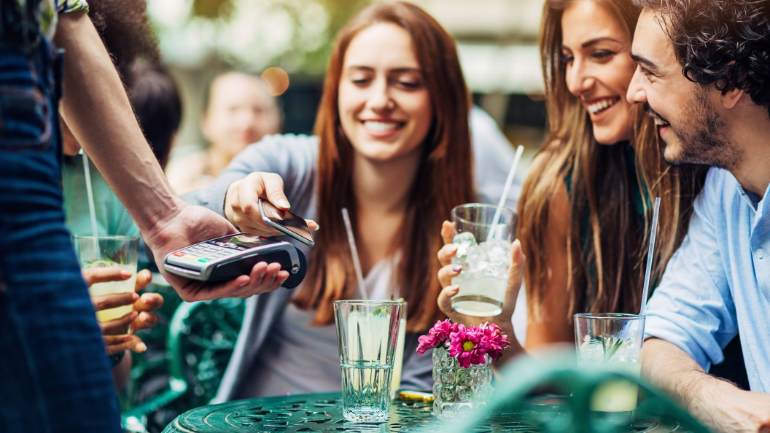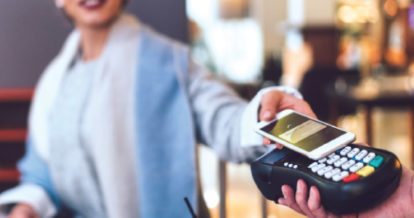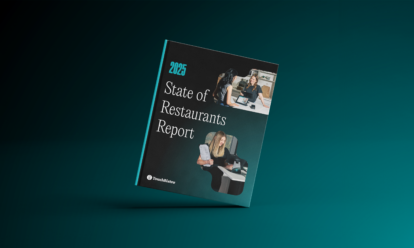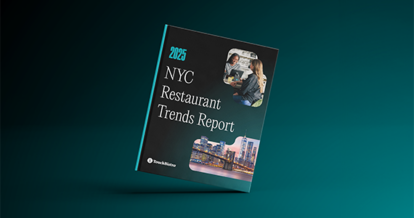Would you rather lose your wallet or your phone?
Five years ago, you might have had to think carefully about it. Today? If you’re like most people, your instant response is, “I would rather lose my wallet than my phone. Any day of the week.”
Aside from the value of the device itself, there are good reasons why we’re protective of our phones. It’s where you’ll find professional and social contacts, can’t-live-without apps, plus precious photos, videos, notes and other personal mementos.
But as consumers become savvier, there’s another increasingly compelling reason to appreciate your phone more than your wallets: mobile payments.
Apps have been replacing credit cards at a rapid rate. When you can use your phone to pay for everything from clothing to coffee to a ride across town, why would you weigh yourself down with a wallet?
In 2018, 55 million Americans – 20% of the population – used their phones to pay for goods or services, according to eMarketer. By the end of 2019, that number is expected to rise to nearly 62 million.
Despite the added security benefits (check out the benefits section below), North America is late to the party. Mobile payments have been popular in tech-forward countries like China for years. A 2018 Mercator Advisory Group report found that the mobile payment market in China is more than $5.5 trillion, which is 50 times more than U.S. volumes.
According to Mercator’s research, part of the reason China has experienced such explosive growth over the last several years is that debit and credit cards have only recently (since 2002) emerged as payment options in the Asian market, thanks to landline infrastructure problems that slowed the rollout of the payment processing industry.
By the time the technology was sorted out, smartphones were everywhere, so mobile payment processing companies like WeChat Pay, AliPay, and Paytm were able to swoop in. Much of China went from cash to mobile payments in one fell swoop, skipping the PIN, chip, swipe, dip phase that is still most popular in North America.
Some think the U.S. is slow to adopt mobile payment because the technology is still a barrier for some users and the benefits are not clear to many. And since many consumers consider tap and chip/PIN options the height of convenience, they’re not especially motivated to figure out the mobile wallet.
A 2017 Pymts.com survey found that the percentage of smartphone users who have used mobile wallet to pay was actually quite low for all three of the major mobile wallet apps (13% Apple Pay; 7% Android Pay – now Google Pay – and 5% Samsung Pay). Those numbers have surely risen in the last two years, but experts say adoption continues to be almost glacially slow.
Another reason for the slow adoption among consumers is that U.S. merchants are also slow to accept mobile payments – despite the fact that most payment terminals are compatible with the technology and require almost no extra cost or work on the part of restaurateurs.
This is important to keep in mind if you’re looking to set yourself apart from the competition. Restaurant payment options can be as persuasive as ambience and food quality for many diners, especially Millennials and Gen Z, who value convenience and technology in equal measure.
Clearly, there’s a lot to be gained by accepting mobile payments. Want to be sure it’s right for your restaurant?
In this article, we’ll help you understand the basics:
- What are mobile payments?
- What’s a mobile wallet?
- Who’s making mobile payments?
- What are the benefits of mobile payments in FSR and QSR restaurants?
- What should you consider when choosing whether or not to accept mobile payments?
- What about online ordering?
Disclaimer: All of the information contained in this article is for informational purposes only and does not constitute legal, accounting, tax, or other professional or compliance advice. It is your responsibility to determine whether credit card surcharging is permissible in your jurisdiction. You are solely responsible for ensuring that your activity is compliant with the card network requirements and all laws applicable to you. Non-compliance may result in regulatory consequences or fines.
What Are Mobile Payments?
Mobile payments are transactions completed through a mobile device, such as a smartphone or tablet.
There are different types of mobile payments. Things like sending an e-transfer to a friend or business or using PayPal to pay for an online purchase are considered forms of mobile payment. Customers can also make a mobile payment in-person, in a store or restaurant. All they need is a mobile wallet app on their phone; and the restaurant or store needs a payment terminal that accepts mobile payments.
What’s a Mobile Wallet?
A mobile wallet is an app that securely stores the bank details of a consumer’s credit or debit card. Once the information is stored in the app, the mobile wallet can tap the same way a card would on a payment processing terminal.
The technology behind mobile payments is simple. Near field communication (NFC) is what enables a phone and a payment terminal to communicate when they’re in close proximity to one another. If you’ve ever made a mobile payment, you’ll know that your phone has to be within two inches of the terminal to process the payment.
There are plenty of mobile wallet apps, but the three most popular in North America are Apple Pay (for iPhones), Samsung Pay (for Samsung devices) and Google Pay (for android users). They may have different interfaces, but each of them essentially does the same job: safely stores credit or debit card information and allows consumers to access it to complete a purchase on an NFC terminal.
Unlike using an actual credit card, the consumer only needs to hover their smartphone (with their mobile wallet app open) over the payment terminal. There’s no need to swipe with a magstripe, tap, or even enter a PIN. This “contactless” payment is usually processed in seconds.

Who Uses Mobile Payments?
Anyone who owns a smartphone can make a mobile payment – that’s 77% of Americans. By the end of 2019, it’s expected that 2.5 billion people around the world will be walking around with a smartphone. That’s a lot of potential mobile payments.
The demographics of mobile payments users are not surprising: 72% are millennials or Gen Xers. They are more likely to “live in metropolitan areas, and have bank accounts and college or postgraduate degrees,” according to a 2016 Pew Research study, which also found that people are motivated by more than just convenience to make mobile payments. They want to receive rewards, discounts, alerts and electronic receipts. Plus, people like to avoid fees, such as overdraft or check cashing fees.
3 Benefits of Mobile Payments for Restaurants
If you’re looking to please your customers, invite loyalty, and encourage spontaneous sales from people just strolling by, using an integrated payments system that facilitates mobile payments is the answer.
Here’s why:
- It’s fast. A contactless payment transaction saves your customers and servers valuable time when settling up. No need to make change with cash or punch in a PIN with a card. Mobile payments are the quickest way to pay a restaurant bill, which is why many time-starved diners whip out their phones at every opportunity.
- It’s convenient. In our increasingly cashless society, people are looking for the most efficient way to make their way through the day. Consumers who forget their wallet at home or don’t want to carry cash or credit cards can enjoy a dining experience with nothing more than their phone. Who forgets that at home?
- It’s secure. While some people fret about security, mobile credit card processing is a safe way to make a payment. The credit card is encrypted by the app and locked behind the phone’s security features. Consumers have to unlock their phone to access their mobile wallet, ensuring not just anybody can pick it up and go on a shopping spree.
Take advantage of your tech-savvy payment options by letting diners know that it’s easy to pay the check at your restaurant.
You can have fun with signage, inside and out, announcing to your customers that you’re in the business of satisfying their every need – including payment!
“Forgot your wallet? No problem! We accept mobile payments.” Or, “We’re here to satisfy your appetite – and make your life easy. In addition to cash and cards, we accept Apple Pay, Google Pay, and Samsung Pay.”
And if you want to beef up your lunch traffic, consider providing a 30-minute in/out guarantee for patrons who opt for restaurant mobile payment.
3 Factors to Consider When Choosing Whether to Accept Mobile Payments
A TouchBistro Restaurant Industry Report found that restaurants are diversifying the payment methods they accept. Cash, credit, and debit payments are almost universal across FSRs in the United States, but restaurants are increasingly taking mobile payments like Apple Pay, Google Pay, and Samsung Pay. In fact, 18% of restaurants in the study are set up to accept all three.
Are you looking to join them? Here are three things to think about:
- Compatibility and cost. Check with your payment processor to see if your payment terminals are compatible with mobile wallets, and if this will impact the merchant credit card fees you pay. Most modern terminals have the functionality – it’s often just a matter of flipping a switch to turn it on. If yours isn’t compatible, you may need to upgrade.
- Customer demographics. Before you decide that mobile payments aren’t for you, consider your current – and target – customers. If they’re younger than a baby boomer, chances are they’ll want the convenience of paying with a mobile wallet. If you’re aiming to attract younger diners, this is one simple way to do that.
- Risk of fraud. Is fraud an issue in your restaurant? Consider this: mobile payments are more secure than virtually any other type of payment, besides ye olde fashioned cash. Credit card and banking information is locked behind the phone’s security functions. An iPhone X requires facial recognition to even open the phone.
What About Online Ordering?
Another way to take advantage of mobile payments is to partner with a food-delivery service that process payments digitally through their app.
The State of Full Service Restaurants in 2020 report found that online ordering is changing the restaurant industry and giving full-service restaurants a new way to earn revenue – 85% of restaurants use an online ordering platform, which is up 5% from the findings in 2019. Four out of five of these restaurants use at least two or more platforms.
Grubhub and Uber Eats are the most popular online ordering platforms among FSRs, but this varies based on geography. DoorDash is another service that does well in certain parts of the U.S. The restaurateurs surveyed chose online ordering platforms based on their reliability, popularity, and cost. And more than half of those restaurants conduct six to 20% of their business through their online ordering platforms, which has resulted in an 11 to 20% increase in overall sales volume.
Even better: not only has online ordering increased sales for full-service restaurants, but it’s also increased the average check size. The majority of restaurants report that customers spend up to 20% more on online orders – due to more add-ons and more menu items per check.
Working with a restaurant merchant services provider that lets you accept mobile payments, in-store or through online ordering, is just one more way you can evolve with your consumers. Choice, convenience, and a willingness to evolve with restaurant payment processing technology are all ways to win the business of today’s diners.
Learn how to save money on payment processing fees
Sign up for our free weekly TouchBistro Newsletter







